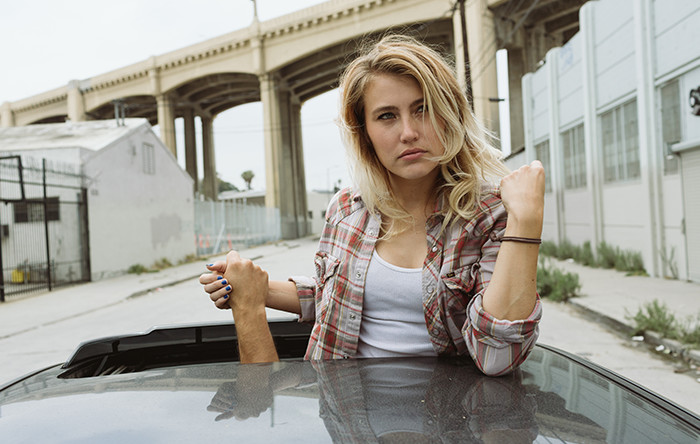If your teenager just got his or her license, your blood pressure likely just rose. Cars and new, young drivers can be a dangerous combination. But it doesn’t have to be if you teach your high school student safety for teen drivers.
Motor vehicle fatalities are the leading cause of accidental deaths among teens, according to the Centers for Disease Control and Prevention. You’ll want to teach your teen not only how to be a safe driver, but how to be a safe passenger.
Read these five tips from The National Highway Traffic Safety Administration on how to keep your teen safe while driving, and as a passenger.
1. No cell phone use while driving
Cell phones and teenagers are like peanut butter and jelly these days. Teach your teen that it’s never okay to talk on the phone, text, check emails, or otherwise use a phone while driving.
Teens that text while driving end up driving outside their lane approximately 10 percent of the time, according to
Even when cell phones are taken out of the equation, your teen driver can just as easily become distracted by their friends while driving. A car full of teens, interesting gossip, and a few jokes can be enough to take a teen’s focus off the road.
According to research, the risk of a fatal car crash goes up in direct relation to the number of teens in a car. One National Highway Traffic Safety Administration study found that a teen driver was 2.5 times more likely to engage in risky behaviors while driving with one other teenager, and three times more likely with more than one other teen in the car.
When your teen gets his or her license, consider instilling a rule that they not drive with extra passengers for a few months, or longer.
3. No speeding

Speed limits are set for a reason, and you should teach your son or daughter that safety for teen drivers includes abiding by the speed limits. When driving with your teen, point out the speed limit signs, and note when the limit changes. Help your teen get into the habit of looking for speed limit signs, and following them.
Also explain to your teen why speeding can be so dangerous. One scary statistic is that in 2012, speeding was a factor in nearly half of all car crashes that killed drivers ages 15 to 20.
Also, if you’re speeding, the distance required to come to a stop increases, and if a crash does occur, you’re more likely to become injured if you’re traveling at a high rate of speed. Again, lead by example, obeying speed limits while you’re driving.
4. No alcohol
Alcohol and driving don’t mix at any age, and can be particularly dangerous for young drivers. In 2012, among drivers ages 15 to 20 involved in fatal car accidents, 28 percent of the drivers killed had been drinking.
The minimum legal drinking age is 21 in all states. Talk to your child not only about the risks of underage drinking, but about drinking and driving. Also let them know never to get into a car with a friend who has been drinking.
It’s a good idea to let your teen know that you won’t punish them if ever they need to call you for a ride home because they’ve been drinking, or their friends have been drinking, and they need a ride. Don’t let a fear of punishment be the reason your teen gets behind the wheel drunk, or in a car with a drunk driver.
5. Always wear a seat belt

Some teenagers like to rebel, and not wearing a seat belt while driving or while riding in a car is an easy way to do so. Peer pressure can play a role. When the teen driver in a fatal car accident was unrestrained, studies show almost four-fifths of that driver’s teen passengers were unrestrained as well.
Teach your teen to rise above peer pressure, and trying to “look cool” by not wearing a seat belt. Point out how senseless it would be to die in a car accident that they could have lived through if only they had a seat belt on.
Be safe out there on the roads, parents and teens. And for more ways to keep your teen safe, read these tips for keeping your kids safe on social media.


